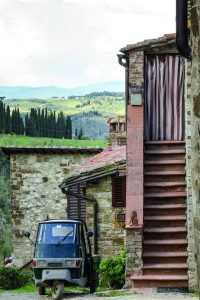What the Vespa was to private transport in Italy in the lean years following the Second World War, the Ape would be to commercial transport…

When the Second World War ended, Italy was in ruins. Not only had she fought on the losing side but, in the process of losing, much of her infrastructure – roads, bridges and industrial buildings – had been deliberately and systematically destroyed by Allied forces. Italy needed to be rebuilt, and on a shoestring budget.
The answer to her private transport problems came in the form of the Vespa, the scooter designed by aircraft designer Corradino D’Ascanio. And it was D’Ascanio again who came up with the answer to the shortage of small commercial vehicles – the Ape.
The name recalls the Vespa too. Vespa in Italian means ‘wasp’; ape means ‘bee’ – the idea here being that the vehicle was as busy as a bee. Indeed, the very first Ape was basically a Vespa with two wheels at the back, sufficient (just about) to support a flatbed structure on the rear axle. It wasn’t until 1964 that the driver’s comfort was considered and the cabin was added.
Piaggio still make Apes today – albeit in India, and albeit rather more advanced ones than they used to. The current model, the Classic 400, sports a 435cc Greaves of India diesel engine and comes with electric heating as standard. Oh, the luxury! An old Ape, in good nick, will cost you a small fortune.
